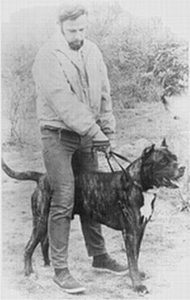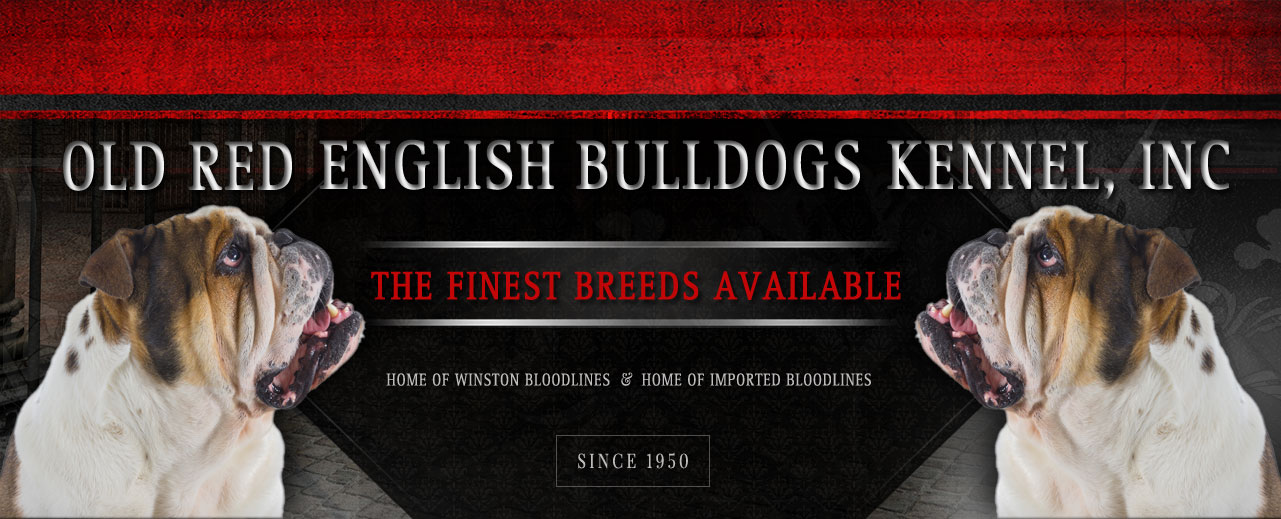Living Area: This breed does best in a home with a large, fenced yard but can adapt to apartment living if it receives sufficient exercise.
The American Bandogge Mastiff’s coat should be short, close, and medium-fine, coming in a variety of colors such as brindle, black, fawn, red, and blue, often accented with some white. However, all-white or predominantly white dogs are not considered desirable. An average shedder, the American Bandogge Mastiff’s coat is easy to groom and should be brushed occasionally with a rubber brush to remove dead hair.
The Bandogge Mastiff is not a technically purebred breed. Primarily used for big game hunting and as guard dogs, the Bandogge was employed by British gamekeepers, which led to the breed being referred to as the “Gamekeeper’s Night Dog.” These Bandogges filled the roles of patrol companions and dispatch dogs, often capturing wounded game. An even more dangerous job for the Gamekeeper’s Night Dog was to locate and fight armed poachers, who would have to fight for their lives if the dog got a hold of them. In France, the Chien du Nuit was a similar type of dog that served the same role as the Bandogge.
The American Bandogge Mastiff is a crossbreed of various types of Bulldogs (such as the American Bulldog, American Pit Bull Terrier, and Bull Terrier) and Mastiffs (including the Neapolitan Mastiff, Bullmastiff, and Old English Mastiff). The breed owes much of its development to two American mastiff breeders. In the 1960s, veterinarian John Swinford aimed to create the ultimate guardian dog by crossing a male American Pit Bull Terrier with a female Neapolitan Mastiff. Breeder Joe Lucero also played a significant role in the evolution of the breed and specifically refers to his dogs as American Bandogge Mastiffs.
The Bandogge is often described as having a British canine temperament, which means it has a high stimulus threshold and a strong pack mentality, without a desire to assert dominance. When properly raised, this temperament makes them trustworthy with children, and they can often become self-appointed “babysitters.” Full of energy when playing or working, the Bandogge is calm, composed, and easygoing during downtime. It is not shy or apprehensive when meeting new people or dogs and demonstrates a high tolerance for stress, with a quick recovery.
Good-natured and extremely social, the American Bandogge Mastiff is devoted to its owner and eager to work. If raised from a puppy, it will get along well with other household pets. As long as it is treated with respect, the American Bandogge Mastiff will become a protective, caring, and loving member of your family.
The American Bandogge Mastiff will shift from its calm state when a threat arises, making it an exceptional guard dog and an intruder’s worst nightmare. It won’t bark before attacking, giving it the element of surprise. This breed has an uncanny ability to distinguish between normal human activities and suspicious or aggressive behavior. With a strong balance of drives and a self-confident nature, it is a highly predictable and stable dog. The Bandogge can switch between drives with little indication, so an expert and experienced dog handler is needed to recognize the switch before it happens. However, these drives do not foster outward aggression, but it’s important to be cautious of this dog’s capabilities when threatened.
As a puppy, the American Bandogge Mastiff can be rambunctious, which is typical for larger breeds and can be influenced by its environment and upbringing. This breed is best suited for those with experience, so it can be properly molded and nurtured according to its individual traits and behaviors.
Health Problems
Like purebred dogs, hybrid dogs such as the American Bandogge Mastiff can develop genetic health problems. The American Bandogge Mastiff may be prone to health conditions common to both American Pit Bull Terriers (APBTs) and Mastiff-type breeds, so it is important to research potential breeders thoroughly. Common health concerns include hip and elbow dysplasia, eye diseases such as progressive retinal atrophy, autoimmune thyroiditis, epilepsy, various types of cancer, and skin problems. Additionally, due to its deep chest, the American Bandogge Mastiff is prone to gastric dilatation-volvulus (GDV), also known as gastric torsion or bloat.
Although there are no guarantees when it comes to your American Bandogge Mastiff’s health, it is helpful to choose a breeder who conducts health testing to ensure that their puppies are less likely to carry the genetic diseases common to both APBTs and Mastiff-type breeds.
Grooming an American Bandogge Mastiff is fairly easy since it is a short-haired breed. It’s a good idea to train your puppy to stand still for brushing and grooming. Not only is it a great way to bond, but it will be easier for you when your dog weighs over 100 pounds. At first, your puppy may not like being groomed. Be patient— with a little kindness, your dog will soon enjoy the practice, as long as you are calm and consistent. Start by brushing your puppy for a few minutes a day for the first week or two, and then gradually increase the time spent grooming.
Be sure to brush your American Bandogge Mastiff regularly to remove dandruff, dead hair, and dust. Regular brushing helps reduce shedding, prevents skin infections, and improves that annoying doggy smell.
When brushing, use a firm bristle brush, rubber brush, or dog glove. If you don’t have a brush handy, you can use your hand—just wet your hand and run it down your dog’s body from tail to head. After a good brushing, you can rub your dog’s coat with a cloth to make it extra shiny.
Grooming doesn’t just mean brushing—it also includes bathing, cleaning the eyes and ears, and clipping toenails. While you don’t need to do these things every day, you should check your dog’s eyes and ears regularly.
Another tip to help reduce shedding (and doggy odor) is to bathe your American Bandogge Mastiff regularly. However, don’t bathe them too often, as it can be harmful to their skin. Generally, bathing once a month is fine, unless your dog starts to smell sooner.
Exercise
The American Bandogge Mastiff requires moderate exercise, but if it doesn’t get enough physical and mental stimulation, it can become upset when left alone, hard to control, and destructive. Without sufficient exercise, this breed can also become quite lazy. Typically, the American Bandogge Mastiff needs about 45 minutes of exercise each day to stay healthy and happy.
Although this is a larger dog, the American Bandogge Mastiff can do well in apartments if exercised properly. The ideal living situation for this breed is a home with a large, fenced yard. While this dog enjoys its daily outdoor walks, it should not live outdoors— it needs to be with its owner indoors.
Training
Although the American Bandogge Mastiff is an extremely intelligent dog and trains easily, it requires an experienced owner, making it unsuitable for first-time dog owners.
When training your American Bandogge Mastiff, it’s crucial to establish yourself as the pack leader. If you fail to take control, expect significant damage to your home and yard. Since this breed enjoys being active, you’ll need to ensure it receives plenty of exercise throughout the day. When training, be firm and consistent—this is the best approach to ensure obedience.
The American Bandogge Mastiff is an attentive breed that will pick up on your commands. Once you establish your role as the leader, training this breed will become much easier.

